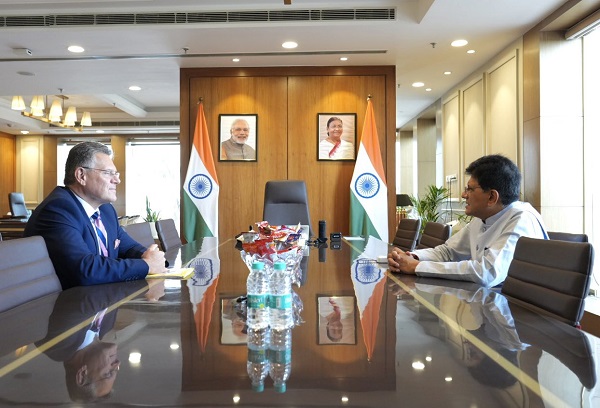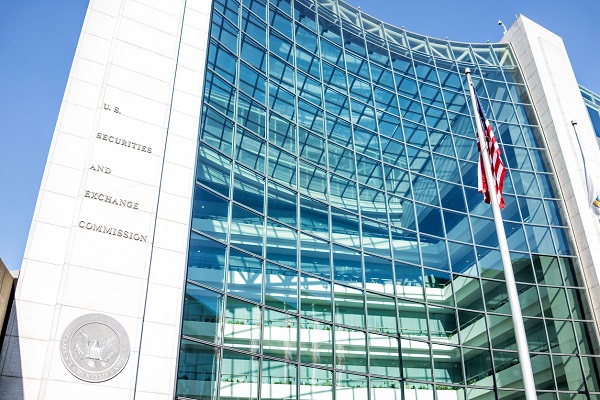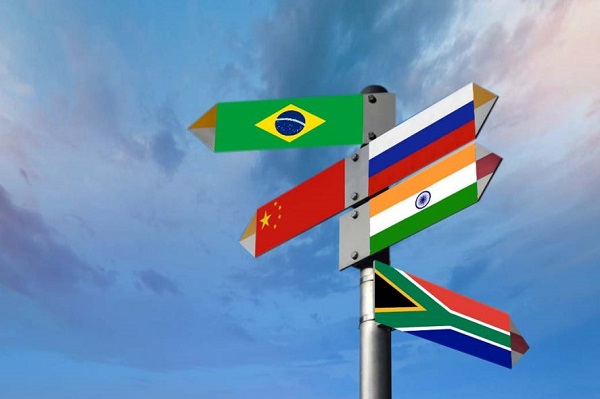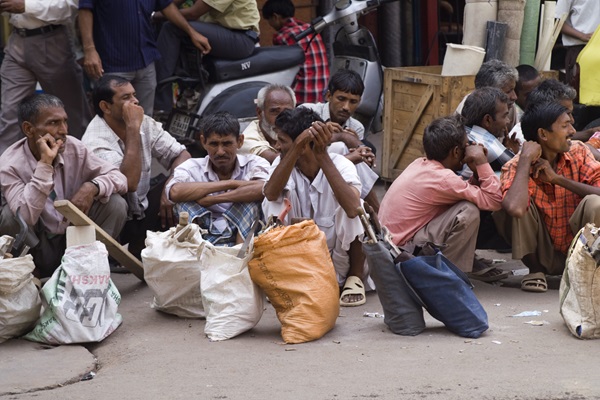.png)
Europe’s Stalled Gaze Risks Losing India’s Market
The EU’s overreach in trade talks, imbalance in additional market access, intrusive non-trade demands, and regulatory zeal, threatens to cost it India’s fast-expanding market.

By Sangeeta Godbole
Sangeeta Godbole, a former bureaucrat and trade negotiator, now teaches and researches global trade and environmental issues.
September 16, 2025 at 11:17 AM IST
The India-EU Broad-based Trade and Investment Agreement has dragged on for nearly two decades, stalled by regulatory ambition from Brussels and a lack of reciprocity on tariffs was once an opportunity for Europe to secure privileged access to one of the world’s fastest-growing economies has turned into a cautionary tale of overreach. The EU’s insistence on grafting an ever-expanding menu of non-trade issues onto the agenda, combined with its entrenched regulatory zeal, risks ensuring that when an agreement is finally struck, it may come too late to matter.
India’s stance is clear: the BTIA must be “balanced and mutually beneficial”. Little reciprocal additional market access combined with a host of non-trade issues creates an untenable balance. Unless this imbalance is recognised, no amount of political will or urgency spurred by shifting geopolitics, such as Trump’s tariffs or Europe’s strategic anxiety about China, will bridge the divide.
Tariff Asymmetry
The textiles sector is the rare exception where India would gain from very high tariff elimination. With the sector already under stress from American tariffs, preferential access to Europe could provide some respite.
But agriculture, another area of expectation, is a mirage. The EU’s complex tariff structures, shifting standards, and non-tariff barriers make expanded access illusory at best.
In essence, Europe would reap the reward of lower tariffs across the board into a fast-expanding Indian market, while India gains little in terms of additional market access.
Non-Trade Expansion
The EU has increased the areas relating to non-trade issues from just the one Trade and Sustainable Development chapter before the pause in 2013 to eight more. These include sustainable food systems, anti-fraud, state-owned enterprises, energy and raw materials, transparency, and more. EU’s May 2025 Round report indicated that the iniquitous and extractive ‘Energy and raw materials’ chapter is kept in abeyance.
This comprehensive expansion on non-trade commitments in a trade deal illustrates the expansionist nature of the EU’s regulatory ambition.
India’s reluctance in committing to these non-trade areas is evident from the India UK CETA texts, which are largely hortative, include strong carve -outs and aver non-application of dispute settlement.
By including these provisions, the EU seeks to create enforcement hooks through which NGOs and regulators can intervene in India’s domestic policy space. The experience of Vietnam under its 2020 FTA shows the risks: formal complaints have been filed against Hanoi for alleged failures to meet environmental and labour commitments, pressuring it to change laws and ratify conventions it had long resisted. These complaints are based on the agreement’s Trade and Sustainable Development chapter.
India’s developmental challenges are complex enough without adding the prospect of foreign-funded litigation over policies framed in New Delhi, not Brussels.
Enforcement Imbalance
Vietnam’s recent recourse to importing coal to provide adequate power to its manufacturing industry has come under the EU’s scrutiny. The EU has pressurised Vietnam to treat re-manufactured goods as new goods, to reduce internal taxes on alcohol (in the interest of EU wine exports?), on the enforcement of IP rights, to ease market access for EU pharmaceuticals, to change its labour laws so as to ratify ILO Conventions which it was reluctant to ratify and so on.
The EU’s creation of a Chief Trade Enforcement Officer, tasked with monitoring both trade and non-trade commitments, underscores the prospect of asymmetrical enforcement. From labour laws to carbon emissions, the EU has repeatedly used its FTAs to extract concessions from partners. Japan, South Korea, Vietnam, Panama, Canada, Georgia, and Moldova have all been forced to amend their labour laws and ratify ILO conventions, due to commitments made under respective FTAs with the EU.
The EU’s ‘tsunami’ of regulatory initiatives, such as the Carbon Border Adjustment Mechanism, the EU Deforestation Regulation, and the Corporate Sustainability Due Diligence Directive, will not remain confined within Europe. Regulatory uncertainty and disproportionate compliance requirements are already discouraging investment and innovation. SMEs struggle to meet due diligence and deforestation traceability demands, risking exclusion from global value chains. Industry associations have repeatedly cautioned that such “regulatory overreach” could undermine the EU’s own industrial resilience, slow the green transition, and shift production outside Europe rather than strengthening it.
Businesses in FTA partners will also have to undergo the same pain. Therefore, whatever small tariff relief, is meaningless if it is nullified by compliance costs and shifting standards.
Lost Opportunity
The following figure indicates how, in recent Indian FTAs, the efficiency of the negotiations is a direct function of the expansiveness of non-trade commitments.
In 2010 when EU was already four years into negotiating the FTA, the EU accounted for nearly 12% of India’s imports; by 2025, its share had fallen to barely 8%. In the same period, China’s share rose dramatically, cementing its position as India’s largest trading partner.
Europe has not only lost time but also leverage. The EU industry, the Commission, and political parties would do well to realise how much India has moved forward and accept the deal, instead of stalling talks with air-headed regulatory ambition.
The BTIA is going to favour the EU in terms of market access and non-trade issues commitments. India’s constant refrain on a ‘balanced and mutually beneficial BTIA’ must be seen in this backdrop.
Creating a Balance
Here are a few areas where specific commitments must be included in the BTIA chapters:
- Investment in sectors notified by the Ministry of Environment, Forests and Climate Change under Article 6.2 of the Paris Agreement should be part of the trade chapter, with clear timelines for inward investment and joint ventures, including tech sharing, if India is interested. Trade liberalisation from the Indian side must be linked to such investments.
- India must ensure that its exports are not engulfed by the EU’s regulatory “tsunami” and obtain adequate carve-outs for each. EU commits to facilitating such carve-outs in its ‘deal’ with the US.
- Right to equal consultation as enjoyed by its member states, as and when the EU modifies its regulations, must be included in the trade chapter.
- The Dispute Settlement chapter must include a liberalisation reversal clause in case any non-trade issues not covered by Dispute Settlement are brought up by the EU for consultation, through any other chapter.
- The EU must also agree on Indian asks on TRIPS waivers in emergency health situations. The EU had hoarded vaccines and refused to cooperate with developing countries on their TRIPS waiver proposal during the COVID pandemic.
- In the TSD chapter, the EU must commit to a sustained reduction in per capita consumption based on global principles of LiFE, which have been promoted in various COP meetings.
- The EU must also commit to implementing its promises on climate finance made in various COPs to be audited by the Indian Department of Economic Affairs.
These commitments from the EU are likely to bring in some ba lance that India has been seeking. Most of these are related to non-trade issues.
The longer the BTIA negotiations drag on, the less there is to gain for Europe. The EU must decide what it values more: an enforceable showcase for its regulatory ideology, or real access to the fastest-growing major economy in the world. India, for its part, must remain steadfast in insisting on genuine reciprocity.
The opportunity of 2010 is gone. The opportunity of 2025 still exists for EU industry, policymakers, and political parties, but not for long.



